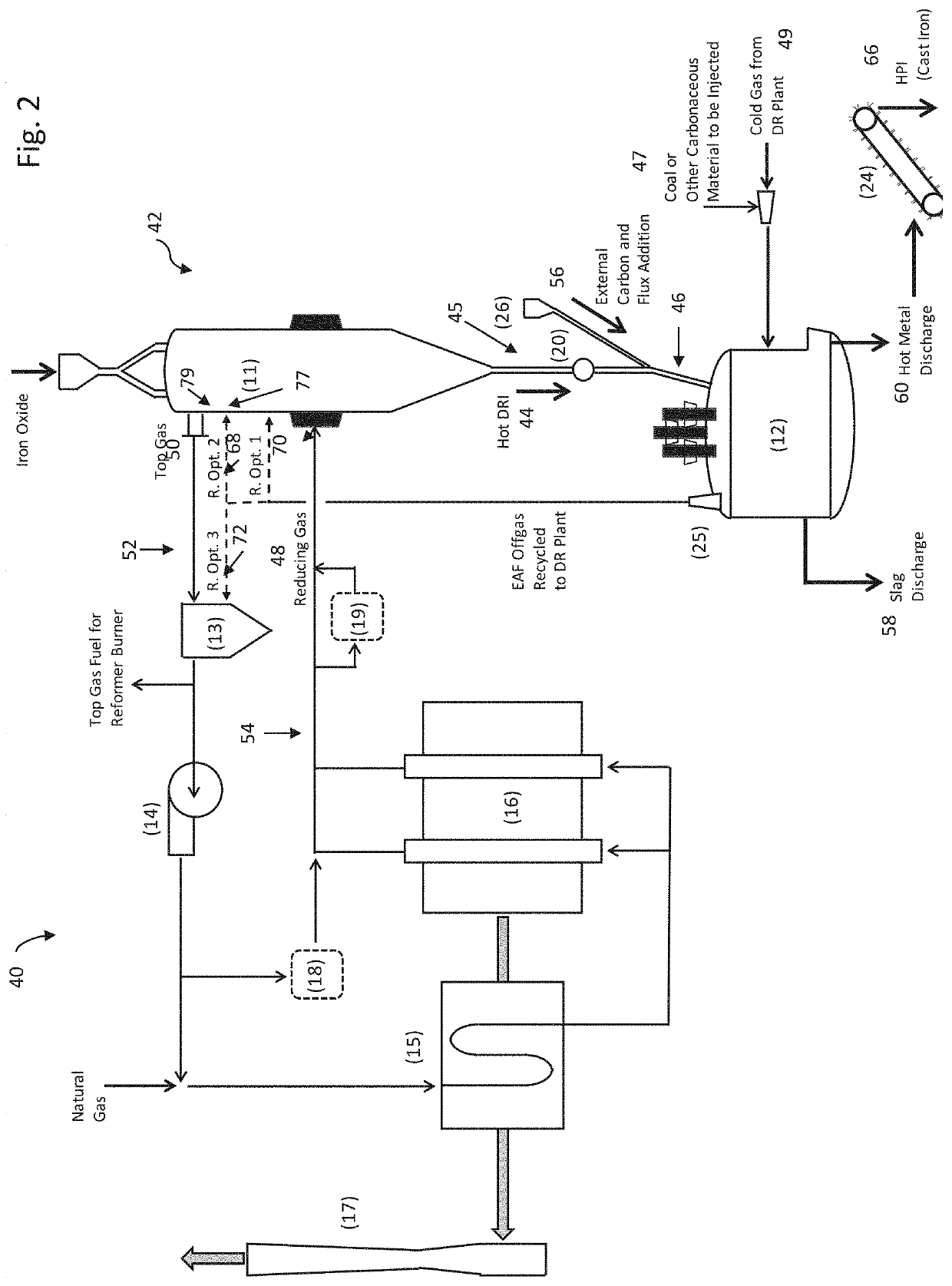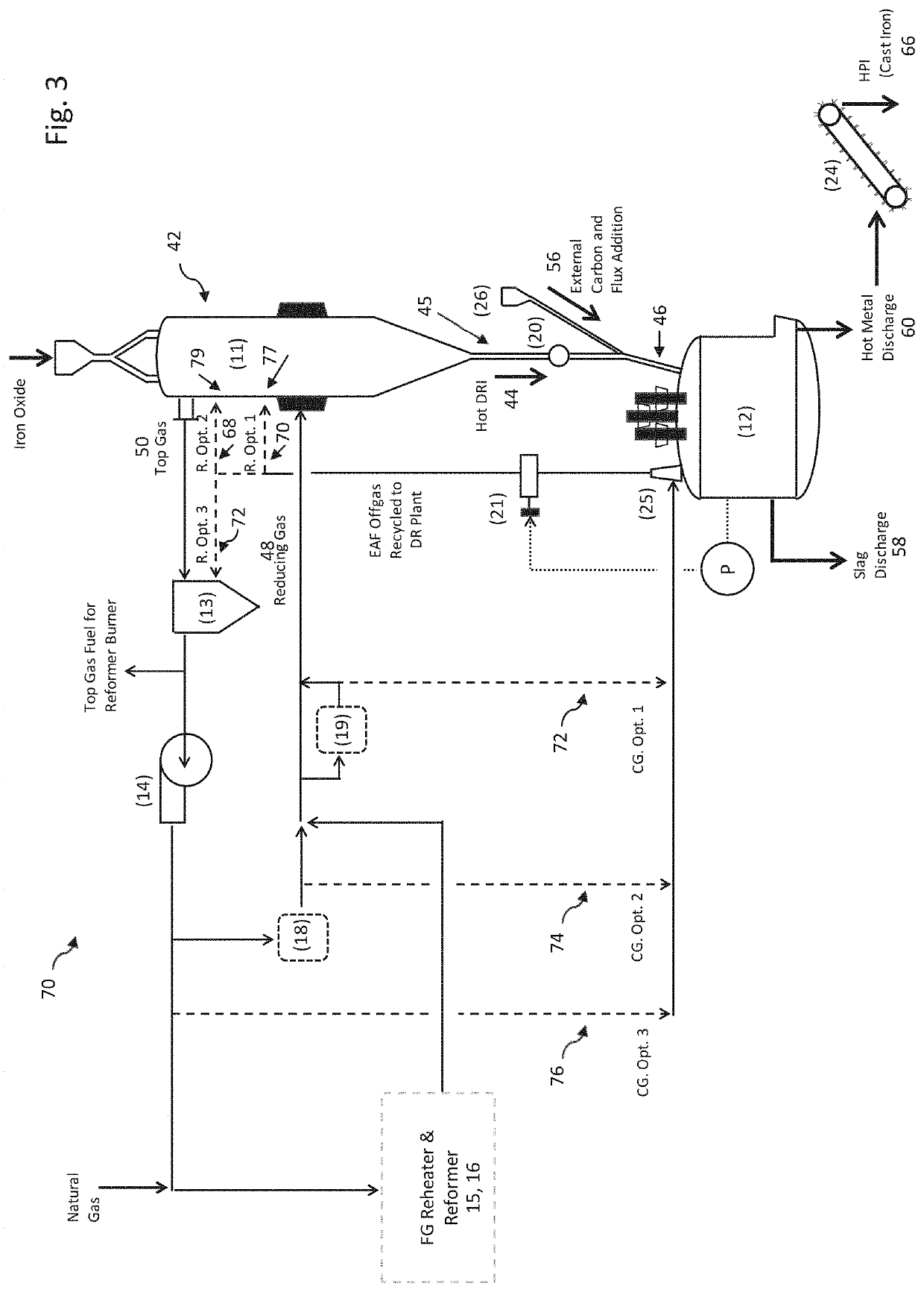Integration of dr plant and electric dri melting furnace for producing high performance iron
- Summary
- Abstract
- Description
- Claims
- Application Information
AI Technical Summary
Benefits of technology
Problems solved by technology
Method used
Image
Examples
Embodiment Construction
[0020]To reduce the slag volume in producing HPI, it is advantageous to apply a two step process; firstly producing the hot metal or cold pig iron after melting the DRI and removing the slag, and secondarily decarburizing the carbon in the first iron product and producing the liquid steel with the additional scrap in a separate melting furnace downstream. The first melting step of DRI can be similar to what the conventional blast furnace practices; i.e. producing the hot metal with the lower grade iron ore under the reducing atmosphere to maintain FeO %<1% in the slag and the slag basicity of about 1.0 to 1.3 lower than the case of the steelmaking at EAF.
[0021]To maintain a lower FeO % under the reducing atmosphere, the carbon dissolved in the molten hot metal must be high enough, typically around 4%. To achieve this level, the residual carbon amount in DRI should be high enough since the carbon material added externally to make up the carbon results in the lower yield at the EAF, d...
PUM
| Property | Measurement | Unit |
|---|---|---|
| Temperature | aaaaa | aaaaa |
| Pressure | aaaaa | aaaaa |
| Angle | aaaaa | aaaaa |
Abstract
Description
Claims
Application Information
 Login to View More
Login to View More - R&D
- Intellectual Property
- Life Sciences
- Materials
- Tech Scout
- Unparalleled Data Quality
- Higher Quality Content
- 60% Fewer Hallucinations
Browse by: Latest US Patents, China's latest patents, Technical Efficacy Thesaurus, Application Domain, Technology Topic, Popular Technical Reports.
© 2025 PatSnap. All rights reserved.Legal|Privacy policy|Modern Slavery Act Transparency Statement|Sitemap|About US| Contact US: help@patsnap.com



